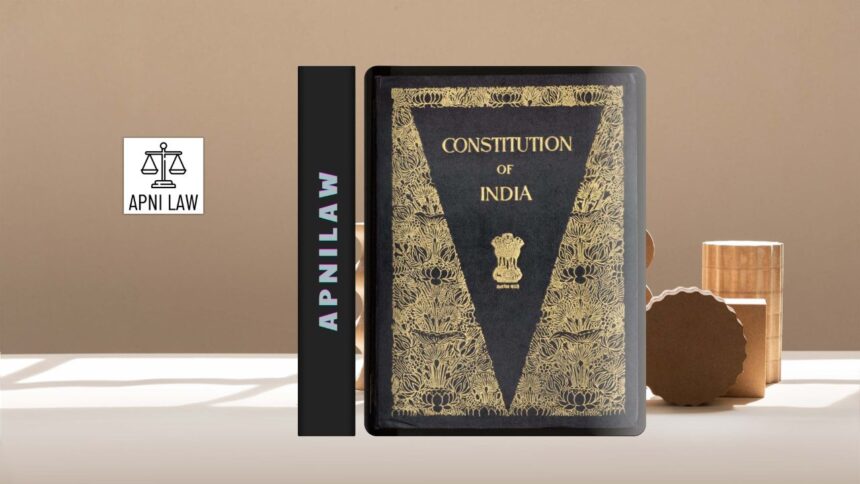Introduction
Public Interest Litigation, commonly known as PIL, has transformed India’s legal landscape by opening the doors of justice to those who cannot approach the courts themselves. It represents a powerful tool that allows the judiciary to respond to issues affecting the public at large, especially marginalized communities. Over the past few decades, PILs have played a crucial role in protecting rights, promoting accountability, improving environmental governance, and advancing social justice. Several landmark cases under this mechanism have shaped Indian constitutional law and set important precedents that continue to influence public policy and governance. Understanding these PIL cases helps explain how the judiciary has acted as an agent of change and a guardian of public welfare.
What Is Public Interest Litigation in India and Why Did It Emerge?
Public Interest Litigation refers to the judicial process where courts allow individuals or groups to file petitions on matters affecting the public, even if they are not personally aggrieved. This concept emerged to bridge the gap between law and justice. Before PILs, only those directly affected could approach the courts, which disadvantaged the poor, illiterate, and marginalized populations. The judiciary recognized that access to justice required a flexible approach and introduced PILs to address widespread human rights violations, environmental degradation, corruption, and failures in governance.
PILs allowed courts to take cognizance of newspaper reports, letters, and petitions filed by socially-conscious individuals. Judges treated matters involving bonded labour, environmental pollution, custodial torture, and women’s safety as legitimate concerns of public interest. This shift fundamentally expanded the scope of judicial review and positioned courts as protectors of collective rights.
How Did PILs Reshape Access to Justice?
PILs revolutionized access to justice by relaxing traditional rules of standing. A social worker, NGO, journalist, or any public-spirited citizen could now file a petition on behalf of affected communities. This democratized the legal system and ensured that barriers such as poverty, illiteracy, or lack of legal knowledge did not prevent individuals from seeking remedies.
The judiciary introduced creative tools such as continuing mandamus, where courts monitor compliance over time. This transformed PILs into a long-term mechanism for ensuring that the executive takes corrective action. As a result, important issues involving child labour, prison conditions, environmental protection, and workplace safety were addressed through judicial intervention. PILs became an integral part of India’s rights-based governance framework.
Which Landmark PIL Cases Transformed Indian Law?
Several landmark PIL cases reshaped Indian jurisprudence and had far-reaching social, political, and environmental impact. These cases represent the evolution of PIL from a judicial remedy to a transformative instrument of justice.
One of the earliest cases that laid the foundation was Mumbai Kamgar Sabha vs. Abdulbhai Faizullabhai (1976). Although not technically a PIL, it introduced the idea that courts must prioritize substantive justice over rigid procedural rules. This decision created fertile ground for the later formalization of PIL.
The formal era of PIL began with Hussainara Khatoon vs. State of Bihar (1979), which uncovered shocking conditions of undertrial prisoners. The case revealed that thousands of prisoners were jailed for years without trial because they could not afford legal representation. The Supreme Court declared that the right to a speedy trial and legal aid formed part of the fundamental right to life. As a result, more than 40,000 undertrial prisoners were released, making this one of the most impactful human rights decisions in Indian history.
Another foundational case was SP Gupta vs. Union of India, which clearly defined the meaning and scope of Public Interest Litigation. The Court stated that when public rights are violated, any person acting in good faith can approach the court. This case strengthened judicial activism and opened the way for large-scale PIL interventions.
How Did PILs Advance Women’s Rights and Gender Justice?
The Supreme Court used PILs to expand protections for women and address gender-based injustice. A defining case in this area was Vishaka vs. State of Rajasthan (1997). The case emerged after the brutal gang rape of Bhanwari Devi, a social worker who resisted child marriage. Since India had no law against workplace sexual harassment at the time, the Court framed the Vishaka Guidelines, which became the first legal framework to protect women from harassment at work. These guidelines later formed the basis of the Sexual Harassment of Women at Workplace (Prevention, Prohibition and Redressal) Act, 2013.
This case demonstrated how PILs could respond to legislative gaps and protect women’s constitutional rights when the government failed to act. It remains one of the most influential decisions in India’s gender justice jurisprudence.
How Did PILs Shape Environmental Law in India?
Environmental protection became one of the most active areas of PIL jurisprudence. No individual played a more significant role than environmental lawyer M.C. Mehta, whose series of PILs created the foundation of environmental constitutionalism in India.
In M.C. Mehta vs. Union of India, the Court issued multiple path-breaking rulings. It directed the cleaning of the Ganges, regulated industrial discharge, mandated the installation of sewage treatment plants, and introduced the principle that polluters must pay for environmental damage. His PILs also played a major role in the litigation surrounding the aftermath of the Bhopal Gas Tragedy.
Another important environmental PIL was Rural Litigation and Entitlement Kendra (RLEK) vs. Union of India, which addressed the harmful effects of limestone quarrying in the Dehradun hills. The Court emphasized ecological preservation and held that the right to a clean environment is part of the right to life. This case marked the beginning of India’s environmental jurisprudence and highlighted the connection between environmental protection and human rights.
How Do PILs Protect Health and Human Safety?
PILs have also had a major impact on public health and emergency medical care. In Parmanand Katara vs. Union of India, the Court held that no hospital, whether public or private, could refuse emergency treatment to an accident victim. The Court declared that preservation of life overrides procedural concerns, and medical professionals must treat patients immediately without fear of legal repercussions. This ruling strengthened the right to life and saved countless lives by ensuring timely medical care.
Another significant case was Javed vs. State of Haryana, which examined discriminatory provisions in population control laws that restricted individuals with more than two children from contesting local elections. This PIL addressed the balance between reproductive rights, gender equality, and governance reforms.
Why Are PILs So Important in India Today?
Public Interest Litigations remain vital to India’s democracy. They expand the meaning of rights, enforce accountability, and ensure that the government acts within constitutional boundaries. PILs highlight issues that may otherwise be ignored, such as pollution, corruption, trafficking, workplace safety, and human dignity.
PILs also strengthen participatory democracy by allowing citizens to challenge unjust policies and demand transparency. Courts use PILs to compel governments to address inefficiencies and protect vulnerable groups. This mechanism ensures that justice is not limited to those with resources, but is accessible to all.
Conclusion
Public Interest Litigation has become one of the most powerful tools for advancing justice in India. Landmark cases such as Hussainara Khatoon, Vishaka, M.C. Mehta, SP Gupta, Parmanand Katara, and RLEK reshaped Indian law and brought relief to millions of people. PILs transformed the judiciary into a guardian of rights, a defender of the environment, and a voice for the voiceless. While they must be used responsibly to avoid misuse, PILs remain essential for protecting constitutional values, promoting accountability, and ensuring that the law serves the public good.








